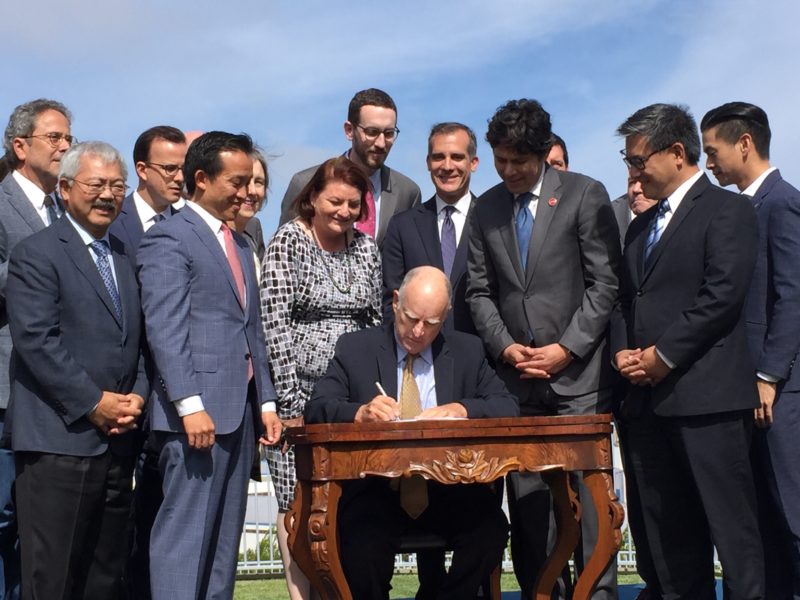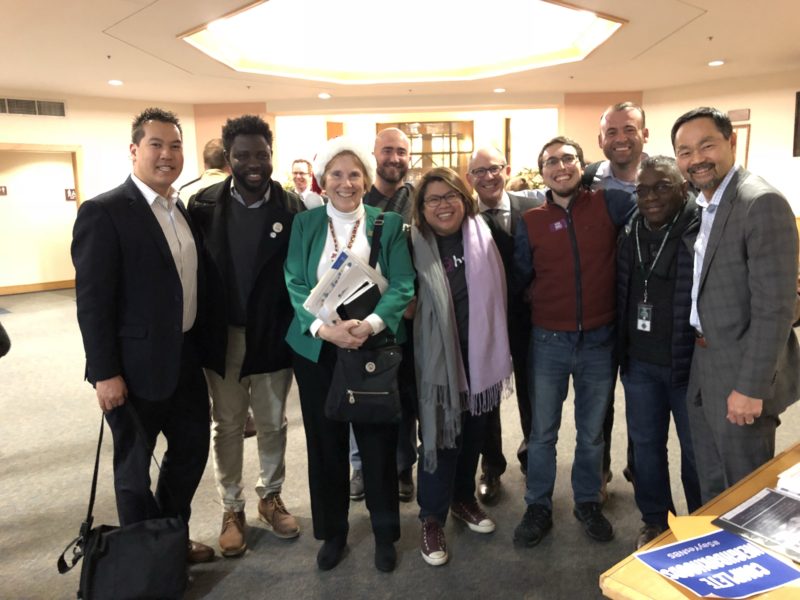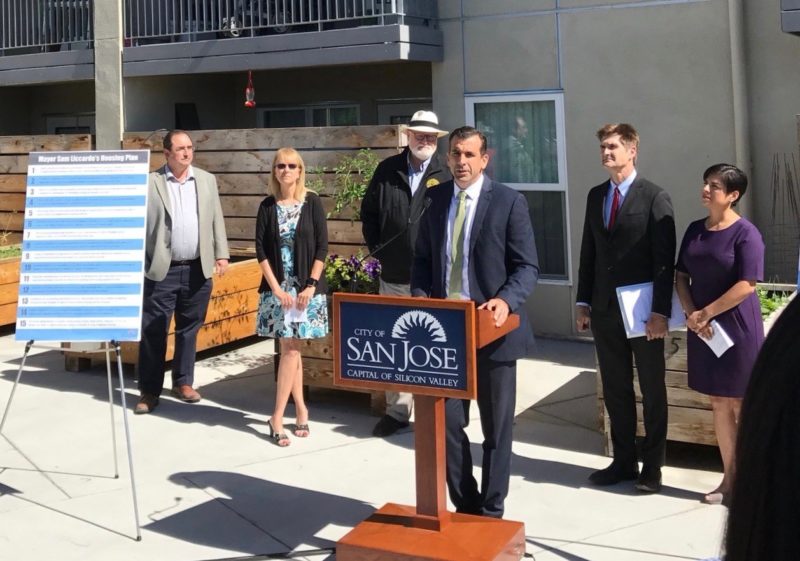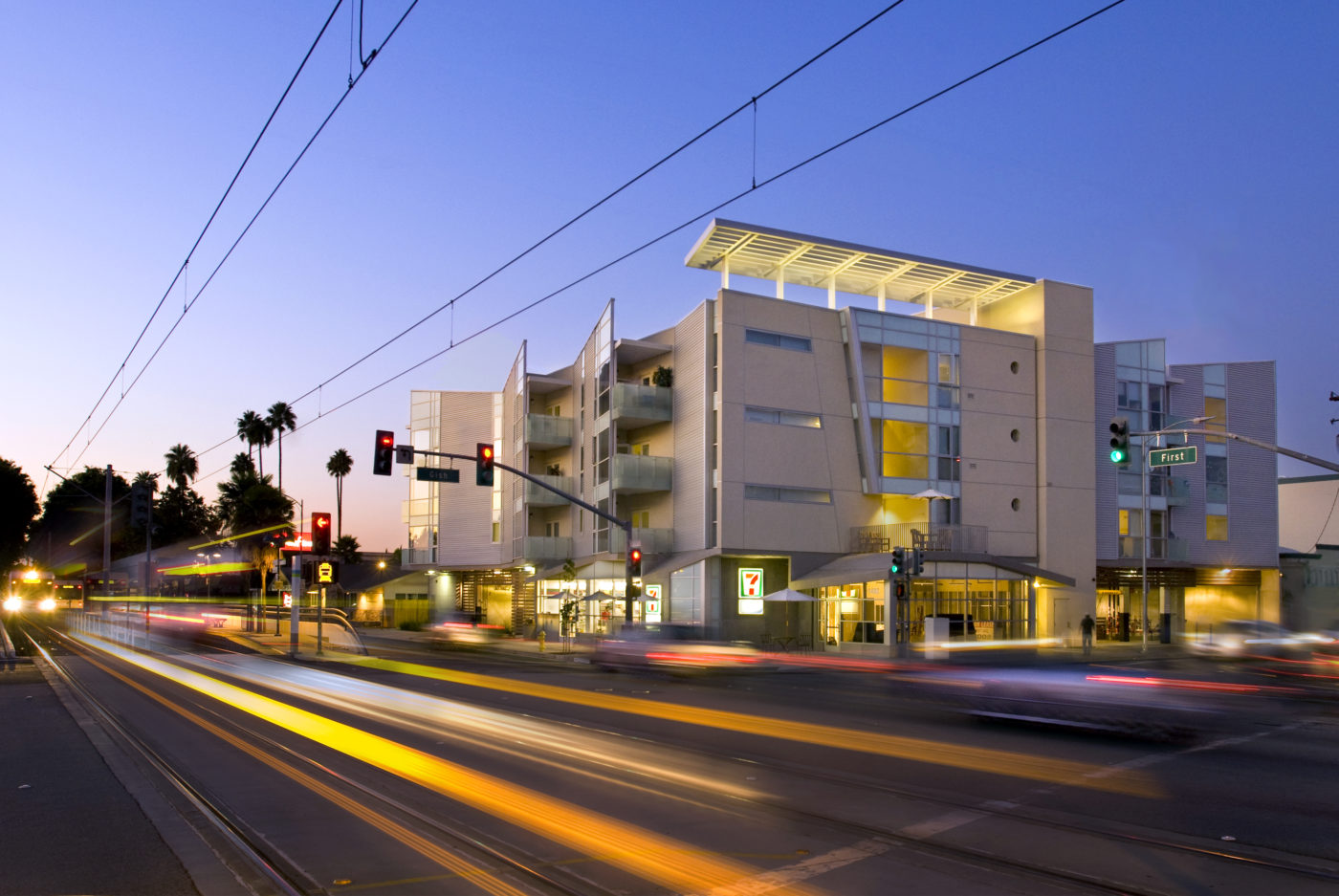https://svathome.salsalabs.org/1_18_18_newsletter
2017 Was a Busy Year for Housing!
Looking back on 2017, we have lots to celebrate. We know that it will take time to change a housing crisis that is many years in the making, but we are heartened by the bold actions many have taken to respond. Here are a few of the key wins.
- Governor Signs Housing Package: In late September, Governor Brown signed a comprehensive 15-bill housing package that includes funding sources, tools, and regulatory measures to increase the State’s housing production. Key measures included SB 2– the Permanent Source bill — which will provide an ongoing source of revenue for affordable housing, SB 1505, which reaffirmed the rights of local jurisdictions to require that affordable units be included in market rate rental developments, and SB 35, which included streamlining measures to require that developments that meet zoning and General Plan guidelines be allowed to move forward. Additionally, SB 3 will place a measure on the November 2018 ballot that would create $4 billion in revenue for affordable housing development and preservation.

- Plan Bay Area 2040 Approved: Last summer, the Metropolitan Transportation Commission (MTC) adopted a region-wide housing, jobs, and transportation blueprint for the 9-County Bay Area that guides transportation investments and land-use decisions through the year 2040. According to MTC, the solution must be a multi-pronged strategy that emphasizes production of new homes for all and protection of the region’s most vulnerable households.
- 10,000 New Homes in Mountain View: Mountain View City leaders took a huge step forward in December with the approval of the North Bayshore Precise Plan, which lays the framework for 9,850 new homes. The City is planning to increase its housing stock by 50% to respond to the area’s jobs-housing imbalance. With 20% of the units targeted to lower- and moderate-income households, the City will more than double the existing affordable housing supply.

- Palo Alto Adopts Comprehensive Plan: the Palo Alto City Council adopted Our Palo Alto 2030, which includes a preferred scenario of up to 4,420 new housing units that will accommodate up to 10,445 new residents.
- Sunnyvale Adds Significant New Housing: As part of the El Camino Real Corridor Precise Plan Update, the Sunnyvale City Council took action approve the “Residential Plus” alternative, which will create the opportunity for 6,900 new housing units along the El Camino Real Corridor.
- San Jose Mayor Announces 15-Point Plan: In early October, Mayor Sam Liccardo released an ambitious plan to create 25,000 new housing units, including 10,000 affordable units. Actions include identifying new sources of funding for affordable housing, encouraging the development of Accessory Dwelling Units, and identifying surplus and underutilized land for affordable homes.

- Inclusionary Zoning is Back! With the passage of AB 1505, the State reaffirmed the rights of cities and counties under their zoning authority to require that market rate rental housing developments include affordable homes. Cities took quick action in response to the bill’s passage, with San Jose automatically reinstating its 15% inclusionary requirement for rental housing effective January 1, 2018. The Mountain View and Santa Clara Councils unanimously acted to increase their inclusionary housing requirements on new ownership and rental housing development to 15% (joining the ranks of other jurisdictions, including Campbell, San Jose, and Cupertino) and are expected to approve ordinances to effectuate this action in early 2018. Other cities, including Sunnyvale and Palo Alto, are also slated to discuss the possibility of similar changes as part of their 2018 housing efforts.
And 2018 Looks to Be Even Busier!
This year is an election year, and we expect housing to be a significant issue locally and at the State level. Additionally, State legislators have already proposed new legislation following last year’s historic 15-bill housing package. And, locally and regionally there are plans and proposals and policies underway. We have listed here some of the key issues that will need the focus of the housing community this year.
- State Ballot Measures: Senator Beall’s Veterans and Affordable Housing Bond Act of 2018, will head to the voters in November. With $4 billion for affordable housing, this Act is a critical source of funding for our efforts to increase the number of homes available for lower-income residents. SV@Home will be working to educate the community about the Bond Act. Stay tuned for information and opportunities to act. In addition to this funding measure, organizations are gathering signatures to amend or repeal the Costa Hawkins Rent Control law and to amend Proposition 13.
- State Legislation: Several new bills have been introduced in this last year of a two-year legislative session, with more time before the February 16th bill introduction deadline. Senator Bob Wieckowski has introduced a new Accessory Dwelling Unit bill that would take further steps to incentivize the production of new second units following the success of his 2016 bill (AB 1069) and his 2017 bill (SB 229). Other key bills introduced early in the year include two from Senator Scott Wiener– one that would mandate density near transit, particularly around BART and light-rail stations (SB 827), and another that would alter the methodology for determining numerical housing allocations under the Regional Housing Needs Assessment (RHNA) process (SB 828).
- CASA – the Committee to House the Bay Area: CASA, which launched last year, is expected to complete its work this year, focusing on actions that increase production, preserve existing housing, and offer protections for current residents. One action has already been approved– an $80 million fund that rewards cities that show the best performance in producing and permitting housing between 2015 and 2020. Access information about CASA here.
- Regional Housing Needs Planning: The work of the seven-member task force to create a RHNA subregion is expected to continue this year. A RHNA subregion will allow jurisdictions to work collaboratively to determine the allocation of housing across the County.
- Local Plans: Following last year’s approval of Mountain View’s North Bayshore Precise Plan, several other large scale plans are expected to make progress in 2018. This includes the much anticipated Diridon Station Area Plan in San Jose, the Vallco Shopping Center Redevelopment Plan in Cupertino, the Stanford Expansion Plan in the unincorporated area adjacent to Palo Alto, the East Whisman Precise Plan in Mountain View, Moffett Park and the El Camino Precise Plan in Sunnyvale, the North Ventura (aka Fry’s) site in Palo Alto, and an El Camino Real comprehensive plan for Los Altos.
- Other Local Issues of Significance: San Jose voters will consider a plan to allow over 900 homes on an industrial site in the Evergreen neighborhood, which will also create an overlay zone that would allow senior housing Citywide on industrial lands. San Jose Mayor Sam Liccardo’s 15-point plan to tackle the housing crisis will move forward in earnest with opportunities to move forward with new homes in North San Jose and fix the roadblocks that have stalled development in Urban Villages. Palo Alto leaders are considering a comprehensive proposal to change zoning and create policies that encourage new homes. Both Los Altos and Campbell plan to take on their General Plans. Morgan Hill will address the need for Farmworker Housing. And, Milpitas leaders will review the City’s General Plan and consider changes to inclusionary requirements and housing fees.As new Measure A projects come on line, we will need to focus on community engagement in partnership with Destination:Home. We also plan to work with cities to continue efforts to refine their inclusionary ordinances following the passage of SB 1505, make surplus land available for affordable housing, and to amend ADU ordinances to streamline the production of second units.
Welcome to the incoming Mayors and Vice Mayors of Santa Clara County!
As we embark on a new busy year, we would like to congratulate the new incoming Mayors and Vice Mayors of our partner cities. Good luck in the new year and we look forward to working together on addressing our county’s affordability crisis!
Incoming 2018 Mayors/Vice Mayors:
- County of Santa Clara: President Joe Simitian, Vice President Cindy Chavez
- City of Campbell: Mayor Paul Reskinoff, Vice Mayor Rich Waterman
- City of Cupertino: Mayor Darcy Paul, Vice Mayor Rod Sinks
- City of Los Altos: Mayor Jean Mordo, Vice Mayor Lynette Lee Eng
- Town of Los Altos Hills: Mayor John Radford, Vice Mayor Roger Spreen
- Town of Los Gatos: Mayor Rob Rennie, Vice Mayor Steven Leonardis
- Town of Monte Sereno: Mayor Burton Craig, Vice Mayor Evert Wolsheimer
- City of Mountain View: Mayor Lenny Siegel, Vice Mayor Lisa Matichak
- City of Palo Alto: Mayor Liz Kniss, Vice Mayor Eric Filseth
- City of Santa Clara: Mayor Lisa Gillmor, Vice Mayor Kathy Watanabe
- City of Saratoga: Mayor Mary-Lynne Bernald, Vice Mayor Manny Cappello
- City of Sunnyvale: Mayor Glenn Hendricks (second term), Vice Mayor Larry Klein
Continuing Mayors/Vice Mayors:
- City of Gilroy: Mayor Roland Velasco, Vice Mayor Dion Bracco
- City of Milpitas: Mayor Rich Tran, Vice Mayor Marsha Grilli
- City of Morgan Hill: Mayor Steve Tate, Vice Mayor Larry Carr
- City of San Jose: Mayor Sam Liccardo, Vice Mayor Magdalena Carrasco
Local Policy Round-Up
City of San Jose Issues Status Update on the Commercial Linkage Fee (CLF)
Last Friday, San Jose’s Housing and Economic Development Departments provided a status update on Commercial Linkage Fees (CLF), a tool that mitigates the demand for affordable housing stemming from job-creating uses. The memo details actions of neighboring jurisdictions in San Mateo, Alameda, and Santa Clara Counties that have enacted a CLF, or are in the process of approval. Staff anticipates returning to the City Council for further direction later this year.
Commercial linkage fees are a key component of a jurisdiction’s affordable housing toolkit. SV@Home continues to work with all jurisdictions in the County to adopt this tool. Stay tuned for more information and opportunities to engage in this campaign.
Los Gatos Approves Policy Changes to Encourage ADU Development, Discusses Phase II of North 40 Specific Plan
On Tuesday, January 16, the Los Gatos Town Council voted to amend its Accessory Dwelling Unit (ADU) Ordinance to comply with State requirements, and include additional changes that make ADUs easier to develop. The Council also discussed the importance of creating opportunities to legalize existing unlawful ADUs, which would support the Town’s efforts to meet its RHNA goals for moderate income housing. Read SV@Home’s recommendations to the Town Council on this issue.
We have to share the comments Councilmember Marcia Jensen made at the meeting:
“We should be considering how we can maximize the number of ADUs in our town and step up to the plate in addressing our housing crisis regionally and locally. We have a whole lot of people who are members of this community – or had been members – of this community that want to get back in and cannot… [This] will allow people to stay in place on their property and perhaps allow their children and grandchildren the opportunity of living in this community that others can’t afford…”
The Council also took up proposed amendments to the North 40 Specific Plan, following the controversial 2017 decision to approve the North 40 Phase I project. Their conversation included consideration of the number and type of units that would be allowed on the remaining developable land in the plan area — also known as “Northern 20.” The Council voted to continue the item to its February 6th meeting. Stay tuned for further updates!
